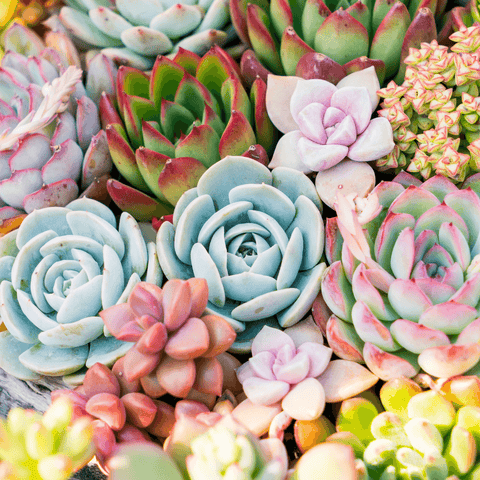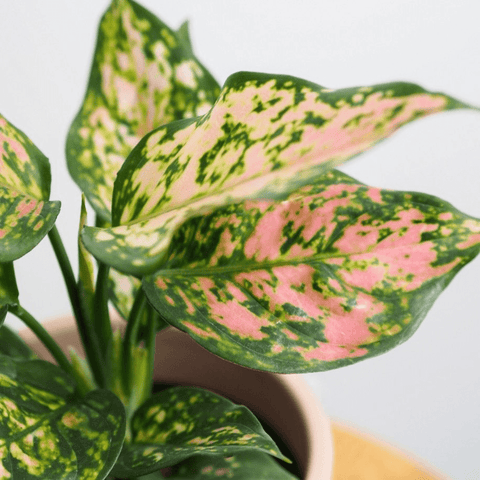Succulents are beautiful, low-maintenance plants that can brighten up any space. Not only are they attractive, but succulents are also easy to care for – no green thumb is needed! Whether you are a beginner or a seasoned pro, this article will give you the tips and tricks you need to keep your succulents healthy and happy.
From knowing the types of succulents to understanding light, soil, water, fertilizer, and pest control, we’ll take a look at all of the necessary steps for succulent care. We’ll also offer solutions to common succulent problems you might encounter and provide an introduction to propagation.
Let’s get started on your journey to becoming a succulent guru!
Basic Succulent Care
When it comes to succulents, the basics of care are relatively straightforward. To keep your succulents healthy and thriving, you should provide them with the right environment, proper water, and adequate sunlight.
In terms of environment, succulents do best when kept indoors as houseplants. It’s essential to find the right spot in your home with plenty of indirect sunlight and good air circulation. When it comes to watering, succulents require less than most other houseplants. To ensure optimal health, water them thoroughly, no more than once a week. Succulents need a good amount of sunlight to thrive, so place them in a spot with at least four hours of natural sunlight daily.
By following these essential tips, you will be well on your way to keeping your succulents alive.
Types of Succulents
Succulents are plants adapted to store water in their leaves, stems, and roots. Many types of succulents make great houseplants. Common succulents include Aloe vera, Haworthia, Jovibarba, Sempervivum, and Sedum. Every kind of succulent requires extra care, so selecting the type that best fits your lifestyle is essential. Knowing the correct type of succulent for your space is the first step to successful succulent care. Succulent care can vary depending on the climate, but proper watering is critical for keeping succulents alive and healthy.
Light
Sunlight Is one of the most important factors to consider when caring for succulents and other houseplants. Succulents typically thrive in bright, indirect light. Avoid placing your plants in direct sunlight, which can cause damage, particularly in hotter climates. Instead, look for a spot near a window with moderate light exposure. However, if your house tends to be dark, you can provide additional light with a grow light. When it comes to succulent care, position the plants so the leaves do not touch the window's glass. Additionally, remember that succulents require a few hours of darkness each day to ensure proper rest.
Soil
Regarding houseplants, the soil is essential for providing nutrients for your succulents. Succulent care professionals recommend a well-drained potting mix specifically designed for succulents. Additionally, you may want to incorporate some sand or pumice to give the soil extra drainage. For optimum succulent health, avoid soil containing large amounts of organic material, which can lead to root rot. Keep an eye out for soil with an airy structure as well, as this will help ensure that the succulent can breathe and access the water it needs.
Water
Moisture is a critical part of succulent care. Succulent plants store water in their fleshy leaves, so they don’t need to be watered as frequently as other houseplants. Also, it’s better to underwater a succulent than to overwater it. As a general rule, water your succulent when the soil feels dry. In the summer, this may mean every two weeks or so. In the winter, water every 3 to 4 weeks. When you do water your succulent, make sure to saturate the soil thoroughly. The best way to do this is to take your plant to the sink or shower and let the water run through the soil for a few minutes. Then let the soil completely dry out before watering again.
Fertilizer
Adding fertilizer to your succulent plants can help stimulate their growth and overall health. It is important to note that succulents do not require high fertilization levels, so it is often best to use only diluted concentrations. Fertilizers should also be used sparingly, as over-fertilizing can harm the plant. If you choose to use fertilizer, make sure to select a houseplant-specific fertilizer that is formulated for succulents. Always follow the directions on the label when applying fertilizer to your succulent plants.
Propagation
It is a great way to help keep your succulents alive. To propagate a succulent, split the existing plant into multiple plants and replant them in new containers with fresh potting soil and adequate sunlight. You can also propagate succulents by taking leaves and rooting them in the soil. This is an excellent option if you want to increase your houseplant collection. Succulents can quickly grow, propagate, and maintain with proper care and attentFollowollow these succulent care tips and use the correct soil to that your plants thrive.
Pest Control
Pest control is essential in taking care of your succulents and houseplants. The most common pest that may be found on your succulent is mealybugs. Mealybugs are small, white insects that may look like cotton or wax and are typically found in the joints of your succulent. To combat mealybugs, you should isolate the affected plant and use a cotton swab or Q-tip to remove them. Be sure to dip the swab in rubbing alcohol first and dab the infected areas of the succulent. You might also need a spray designed to kill mealybugs to remove more stubborn ones. Additionally, it's important to check new plants before bringing them into your home and inspect your existing succulents regularly to avoid infestation.
Common Succulent Problems
As with any other type of houseplant, succulents require specific care instructions to thrive. Therefore, knowing the most common succulent problems and how to prevent them is essential to succulent care.
Plants can typically suffer from too much or too little water, too much or too little light, and infestations from pests. To ensure their health and vigor, succulents should be watered only when their soil is dry and placed in a location that gets plenty of bright indirect light. Check your succulents often for any pests, and if needed, apply a pesticide formulated explicitly for houseplants.
Following the necessary succulent care instructions for your plants can prevent many of the most common problems associated with succulents and keep your plants healthy and thriving.
Conclusion
By following these steps and paying attention to your succulents’ needs, anyone can become a succulent expert. All it takes is patience and consistency. With a few simple tips, your succulents will continue to thrive and be a beautiful addition to your home. With proper care, succulents can be very low-maintenance plants. They can be enjoyed by newbies and experienced gardeners alike. With the right knowledge, your succulents will stay healthy and provide joy to you and your family.





Comments (0)
There are no comments for this article. Be the first one to leave a message!